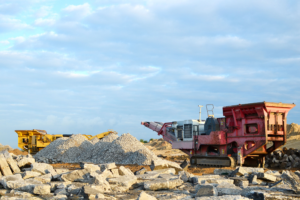Is it finally time to get back into ASX Office REITs now people are returning to the office in droves?

If you know another sector that has spent longer in the doldrums post the Corona crash other than ASX office REITs, tell us about it.
Prior to the pandemic, you might have thought they were amongst the safest investments on the ASX. After all, they were in many instances backed by long-term leases that were only going in one direction – no prizes for guessing it. And while they cost a lot of money to build, record low interest rates and tenant demand meant that many could pay for themselves.
How times and perceptions changed. They crashed enmasse as people feared people would be working for home for years. As we emerged from our cocoons, we were not returning as much as before. So whilst the assets were not going to be busts, they were not going to be as valuable if there is less need for them.
But in 2024, return to the office mandates mean it could be time to get back into this sector again.
Why has the ASX office REITs fared so badly?
The pandemic decimated the office market, and number of major fund managers with investments in office towers have downgraded their holdings. Overall, office values have dropped over 20% from their pre-pandemic peaks. Office cap rates, which measure a buyers’ required return, are still 125 basis points higher than the past two years. For those unaware, the higher the cap rate and required return, the lower the price.
You may not be invested in an ASX office REIT, but your superfund (particularly if it is one of the larger ones such as AustralianSuper) may well be invested in this space – existing developments, new developments or even both. So just about all working age Australians are affected.
The headlines of big companies reducing their space did not fare well. Moreover, higher interest rates mean it costs more to construct office towers. And by extension, remote working means it is even more of a risk to build new office towers, lacking certainty that you’ll get high-quality tenants willing to pay top-dollar rents.
If values of a property fall, a REIT’s gearing gets higher and higher. A general rule of thumb is anything above 30% is unacceptable.
Eventually, the owners may have no other choice but to sell it. This is a reality that occurred during the GFC in the USA as well as in Australia. Yes, even though Australia did not fare as badly, the drying up of credit led to a number of deaths because the REITs had no spare cash. And dependant on how long it was hold for, someone will be recording a loss.
Will the market ever recover?
It remains to be seen, but the sector arguably has the most upbeat sentiment since the pandemic. Now, there are some signs that people are coming back, judging by patronage on the new Sydney Metro, and new office mandates left right and centre, ranging from the NSW Government to Amazon. Some REITs have performed well – GPT Group is up 20% in the last year for instance. And there are major construction projects underway in Australia’s major cities.
Ultimately, it is contingent not just on people returning to the office but interest rates reducing (as well as to what extent). It seems a fait accompli that the next direction interest rates will be heading is downward, but just when and how many cuts is uncertain. One rate cut would be exciting for sentiment, but would have a modest impact at best considering the RBA’s cash rate increased from 0.1% to 4.35%. The return of Donald Trump to the White House has raised worries that rate cuts here may not happen until the middle of next year.
Should get back into the sector altogether?
We think it is worth considering, although we would be more confident in diversified REITs – avoid those that have all their eggs in the office basket. As always, investors should also take a close look at their REITs’ debt and gearing levels, and they should take a look at the broader portfolio.
What are the Best ASX Stocks to invest in right now?
Check our buy/sell tips
Blog Categories
Get Our Top 5 ASX Stocks for FY26
Recent Posts
Develop Global Wins $200m OceanaGold Contract- What It Means for Investors
Develop Global (ASX: DVP) climbed 4% to A$4.36 on Friday after securing a A$200 million underground development contract with global…
Nova Minerals Drops 14% on $20m Capital Raise- Buy or Avoid?
Nova Minerals (ASX: NVA) dropped nearly 14 per cent to A$0.90 following the announcement of a US$20 million (approximately AUD…
WiseTech (ASX:WTC) Rises After Richard White Cleared of Misconduct – Should You Buy the Dip?
WiseTech Global (ASX: WTC) climbed 3 per cent to A$70.18 on Friday after founder and Executive Chairman Richard White was…



